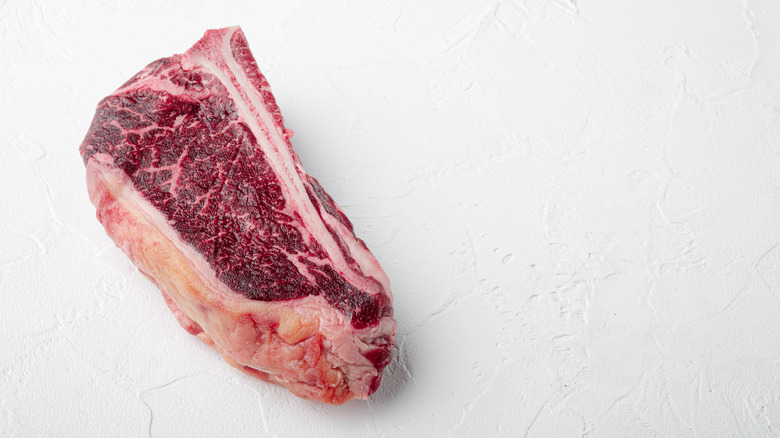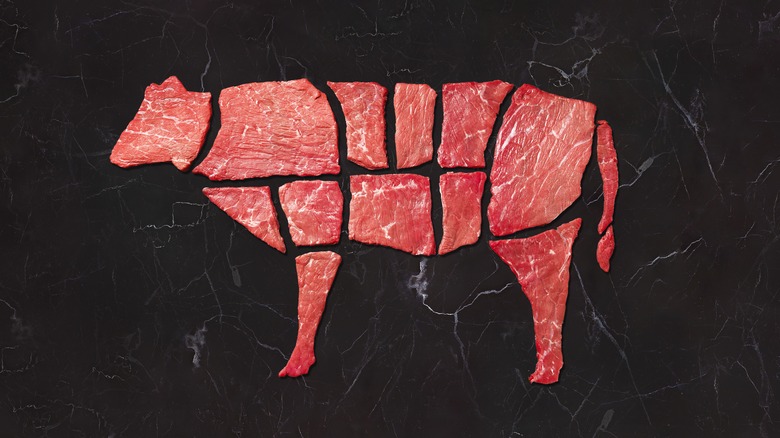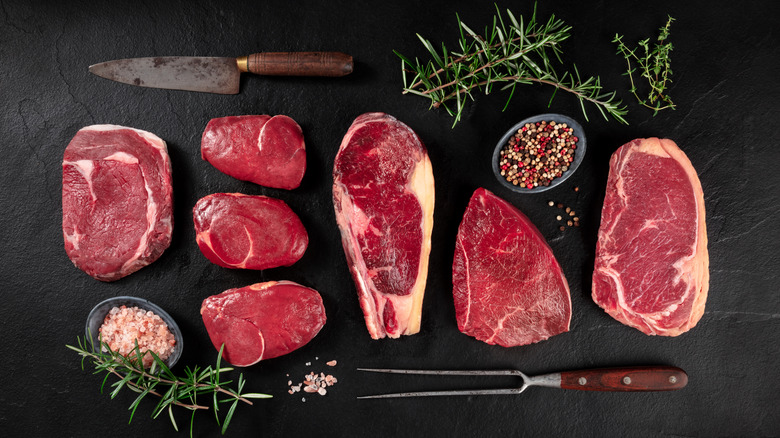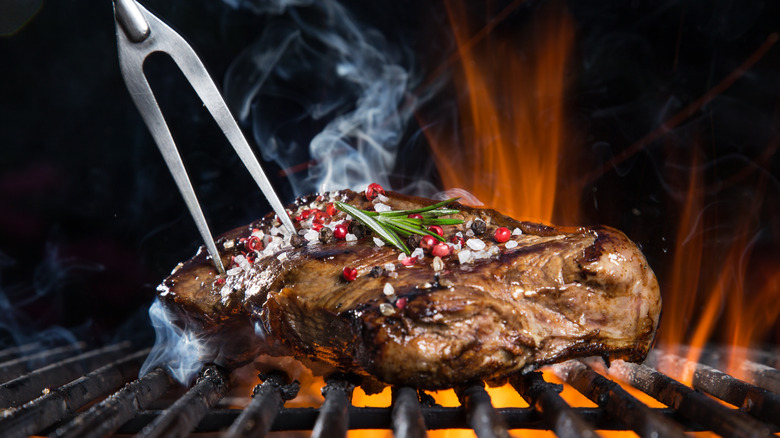What Exactly Is A Club Steak?
While beef isn't the most consumed meat in the world, it's up there. According to Comfy Living, 71.5 million tons of beef were consumed around the globe in 2021, with 46% of that consisting of ground beef. With burgers, meatloaf, pasta sauces, and more, beef finds its way into many dishes. However, when it's not ground up and acting as a contributing ingredient, it's often the star of the show.
Steaks are a more expensive cut of meat than chicken and pork, yielding them to be a finer delicacy and indulgence. From ribeye and sirloin to filet mignon and New York strips, this is just the tip of the iceberg of the varieties you can choose from. However, if you haven't heard of a club steak, it might be time to add it to your shopping list.
According to Virginia Boys Kitchen, this particular cut of meat is essentially a bone-in strip steak and is typically higher in price. The name "club steak" comes from being served in fine-dining restaurants and exclusive country clubs.
Club steak is cut from the short loin
Club steaks have a slightly triangular shape with an L-shaped bone and are juicy with brilliant marbling. According to The Spruce Eats, club steak is cut from the narrower front section of the short loin, which is closest to the rib cage. T-bone or porterhouse steaks are essentially club steaks with tenderloin included, and club steaks are T-bone or porterhouse steaks without the tenderloin.
For an elevated look, some butchers or chefs "french" the steaks, which means cutting the meat away from the end of a bone to present it as a club or handle. If the steak is frenched to where the bone is exceptionally long, it's called a tomahawk. Basically, if you're eating a steak cut from the short loin, it's bound to be full of flavor and tenderness.
If you want to seem like a pro at the butcher shop, club steaks have other names it can go by. According to Cat Heads BBQ, you can refer to club steak as Kansas City strip steak, hotel steak, shell steak, strip loin steak, and Delmonico steak. When requesting a cut, Steak Revolution recommends getting a piece at least one and a half inches thick to ensure the inside stays tender while you achieve that exterior glazed crust.
Club steak vs. other cuts
According to Virginia Boys Kitchens, club steaks are the neighbor to ribeyes, from flavor to juiciness and their red-and-white coloring. However, you can serve ribeyes with the bone in or without, whereas a bone will always accompany a club steak. Cat Heads BBQ notes that the bone in club steak gives the meat a more intense beefy flavor, and the fat elevates it even further while also making it juicier — but both are compared to have similar profiles in taste (via Steak Revolution).
Because club steak is essentially from the same area of the cow as a porterhouse steak, the main difference is the size and leanness. Porterhouse is much larger and includes the tenderloin, a lean beef portion, whereas club steak is smaller with more fatty marbling.
The T-bone steak is essentially the same as a porterhouse cut, meaning it also has a club steak's marbling. But according to Saveur, the T-bone has a smaller tenderloin, often smaller than a porterhouse.
Use a grill or a cast iron pan
According to The Spruce Eats, grilling club steak is best, giving it a crust with that desired smokiness. It's best to start by bringing the meat to room temperature, which typically takes about 30 to 40 minutes per 500 grams of steak (via Steak School).
Next, The Spruce Eats recommends salting the steak generously on the exposed side during cooking and flipping it with tongs instead of a fork to keep your meat tender and full of moisture. Be sure to remove it from the heat when it is five degrees below the internal temperature you're aiming for, and let it rest for 10 minutes before slicing.
If you don't have access to a grill, a cast iron pan can come close to offering a similar crust per Cat Heads BBQ. After bringing your meat to room temperature and salting both sides, preheat the oven to 250 F. Heat the cast iron over medium heat with no more than a teaspoon of oil, and then sear your steak, only flipping once.
When both sides have a golden crust, you can wrap the meat in foil and place it in the oven until cooked to your preferred internal temperature. To ensure your steak retains its juiciness, the trick is to let it sit covered for some time once you remove them from the oven.



